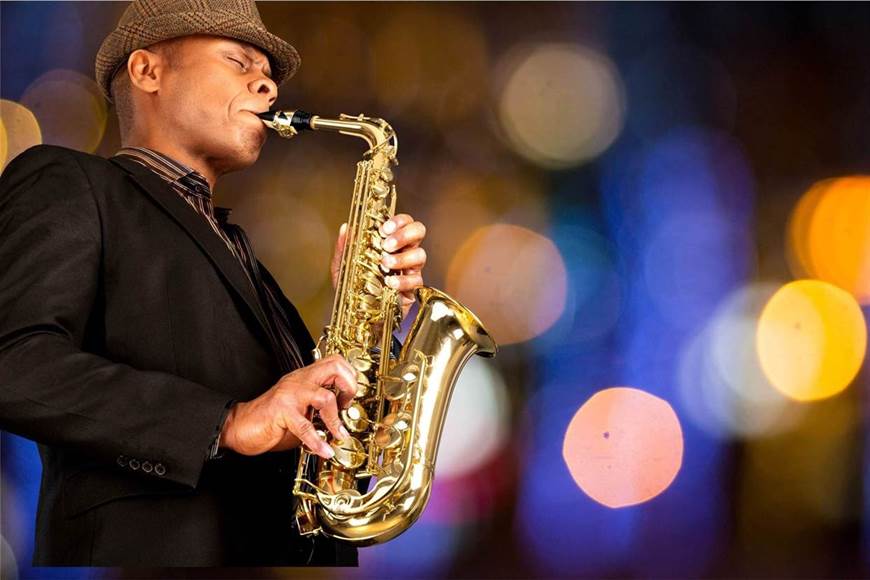Online Saxophone Lessons
 We offer a variety of different courses to suit your needs. The Hal Leonard Essential Elements are incredible; multimedia lessons that allow you to read, watch and listen, all while compounding upon earlier lessons. You learn rhythm, note reading, playing, and eventually, entire compositions you can play with a whole band. For more advanced learners, we offer Royal Conservatory of Music courses; passing the Royal Conservatory exams is a rite of passage for aspiring professional musicians, and successfully passing all of their courses puts you well on your way to succeeding in the world of music. We’re all music lovers, so we offer customized courses as well; our instructors can personalize a program of study that best suits the needs of the student, whether it is to get a head start with a school band program, to reinforce and supplement a current school band program, to prepare for a university music program or just for fun! The sax will take you to incredible heights; let us join you on your journey.
We offer a variety of different courses to suit your needs. The Hal Leonard Essential Elements are incredible; multimedia lessons that allow you to read, watch and listen, all while compounding upon earlier lessons. You learn rhythm, note reading, playing, and eventually, entire compositions you can play with a whole band. For more advanced learners, we offer Royal Conservatory of Music courses; passing the Royal Conservatory exams is a rite of passage for aspiring professional musicians, and successfully passing all of their courses puts you well on your way to succeeding in the world of music. We’re all music lovers, so we offer customized courses as well; our instructors can personalize a program of study that best suits the needs of the student, whether it is to get a head start with a school band program, to reinforce and supplement a current school band program, to prepare for a university music program or just for fun! The sax will take you to incredible heights; let us join you on your journey.
More often than not, music is an evolution of what came before, a compounding of idea, a refinement of technique. This has held true for instrument makers, for the most part; they’re always attempting to iterate on what’s been done before, making minor adjustments until eventually we get a wholly new instrument, a sort of natural selection. This was not the case for the saxophone. The instrument was invented by an instrument maker by the name of Adolphe Sax in 1840, and patented in 1846. The Belgian military had asked Sax to make an instrument that was in a similar range to the bassoon or bass clarinet, but that had a bit more volume to make it suitable for the parade ground. Sax, wanting to create an instrument that would combine the volume of brass with the adaptability of woodwinds, created the saxophone.
The sax, then, lies in a middle ground between woodwinds and brass instruments, though it’s generally considered a woodwind because the sound it produces is made by air causing a reed to vibrate. The saxophone’s body is covered in metal keys that, when press, cause large pads to cover holes and change the notes the saxophonist is playing. The saxophone can be disassembled into three parts: the crook, the mouthpiece, and the main body. Saxophones, being made of brass, are quite heavy, and players hold the instrument by using a strap around their necks, to take the weight off of their wrists. There are a plethora of different sizes of sax, from the tiny soprillo sax to the extremely large subcontrabass sax; the most commonly used saxophones, however, are the soprano, alto and tenor saxes. Saxophones are generally in E♭ or B♭, meaning that when you play a C on a saxophone, it sounds like an E♭ or B♭ on the piano.
The quality of the saxophonists breath is incredibly important when playing the instrument; different ways of breathing, as well as variations in how the diaphragm and throat muscles are contracted can vary the tone and colour of the sounds produced dramatically. To produce a note, the player blows air that causes the reed to vibrate, similar to the noises you could make by holding a blade of grass between your thumbs and blowing on it. One way of varying the sound is by blowing and touching the reed with your tongue; your tongue stops the reed from vibrating, muting the sound. You can also move your tongue in a way similar to rolling Rs in Spanish; this creates a sound that might be described as having bite. Singing while playing creates an even harsher sound. A variety of other innovative and, frankly, exciting techniques have been developed, including multiphonics, where two notes are played simultaneously, to often disorienting effect.
The saxophone was invented towards the end of the Romantic period of classical music; as a result, there’s only been about 150 years of classic orchestral music composed in which the saxophone could be considered. This means most orchestras won’t have a permanent saxophonist; rather, they’ll have saxophonists on call to play in pieces with saxophone. This isn’t to say there aren’t a plethora of orchestral pieces featuring saxophone; such prominent and prestigious composers as Debussy, Gershwin, Bernstein and Glass have featured the saxophone prominently in their music, as solo instrument, quarter or part of the larger orchestra.
The main repertoire for the saxophone may be found in modern popular Western music, including jazz, rock and pop. To imagine jazz without the saxophone is to imagine the absurd; a sad world without Coltrane’s Giant Steps and A Love Supreme, Parker’s Yardbird Suite and subsequent bebop revolution, or Kamasi Washington’s The Epic. For those looking to follow in the giant steps of jazz greats, there may be no instrument more suitable than the saxophone. The experimental, progressive nature of jazz has gained a lot from the wide array of different sounds and tones the sax can produce.
Those looking to play pop or jazz needn’t go further than the sax, either! From pioneering punk rockers The Sonics, Bruce Springsteen’s Born to Run, David Bowie’s Modern Love, and tracks by Katy Perry and Lady Gaga. Even modern rap uses the saxophone, with Kendrick Lamar and Kamasi Washington working together as frequent collaborators.
Learning an instrument gives you so many valuable experiences, and the saxophone is no exception. To master the sax, you’ll have to develop your cardiovascular endurance, learning to regulate the quality of your breath to change the very sounds you’re making. You’ll need manual dexterity, too; it takes agility to shift from note to note on this multi-keyed brass beauty. You’ll need patience and discipline, so that you can keep practicing, even when the going gets tough. You’ll also need to develop a deep sense of self; every saxophonist brings their own unique experience to the instrument, and how you play your emotions will change how a song sounds. Of course, you’ll learn how to read musical notation and rhythms, which is very similar to learning a new language. This is all incredible stuff; rational and emotional knowledge, physical endurance and prowess, a sense of self, and the confidence that comes with mastery, confidence that will let you play in front of a crowd. This stuff is all great for children, too; they tend to be more adaptable, so they’ll learn these lessons quickly, lessons that will stay with them for life.
We want you to have as few obstacles to learning music as possible; that’s why we offer in-home saxophone lessons. As a parent, you may find it hard to set aside the time to drive your child to and from music lessons; with in-home practice, this isn’t a problem. You can carry on with whatever you need to do in your home, all while listening to your child grow and develop as a saxophonist. For those who want to learn in-home themselves, the same benefits apply; you’re in a comfortable space, and you don’t need to drive to a different location in order to learn. That comfort and ease will help you master the sax even more quickly.



